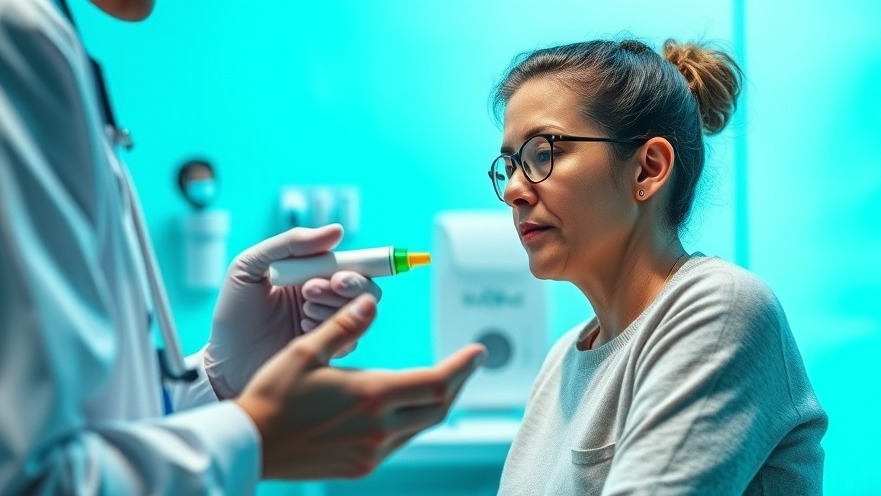
Revolutionizing Infection Diagnosis: The New Breath Test
Imagine a world where diagnosing bacterial infections is as simple as breathing into a device. A novel non-invasive breath test, pioneered by researchers from the University of California, San Francisco (UCSF) and St. Jude Children's Research Hospital, is making this vision a reality. This groundbreaking innovation leverages advanced technology to provide quick and accurate diagnosis, allowing healthcare practitioners to monitor treatment effectiveness more efficiently.
How the Breath Test Works
The mechanism behind this innovative breath test is rooted in its ability to utilize pathogen-specific metabolic tracers. Utilizing a laser-based detection platform, the test focuses on the metabolic processes of pathogenic bacteria, such as Staphylococcus aureus and Escherichia coli, which uniquely metabolize 13C-enriched compounds. These bacteria metabolize specific substrates, producing [13C]CO2 that can be detected in exhaled breath—a significant step forward in identifying infections in real-time.
First Steps: Validating the Technology
Dr. Marina Lopez-Alvarez, the lead researcher, showcased the test's viability at the ESCMID Global 2025 conference. Preclinical trials revealed that five key bacterial species metabolized compounds such as 13C-maltose and 13C-mannitol, producing detectable levels of [13C]CO2 in infected mice. Notably, healthy mice showed no signs of [13C]CO2 production upon exposure to these substrates, confirming the specificity of the test for bacterial metabolism, devoid of interference from mammalian metabolism.
The Clinical Implications of Bacterial Metabolism Detection
This breakthrough addresses an essential gap in current diagnostic methodologies. Existing imaging tools often reflect the host's immune response instead of identifying the pathogens directly. Dr. Lopez-Alvarez pointed out how this disconnect can lead to misdiagnoses, especially in cases of sterile inflammatory diseases. The new breath test offers a pathway to accurate and rapid detection, potentially transforming patient care by enabling timely and appropriate treatment interventions.
Monitoring Treatment Efficacy
One of the most exciting prospects of this technology is its potential use in monitoring antibiotic treatment. In experiments where E. coli-infected mice received the antibiotic ceftriaxone, researchers observed a marked decrease in [13C]CO2 levels after 24 hours. This not only confirms the effectiveness of the treatment but also showcases the breath test's ability to provide real-time feedback on therapeutic efficacy, thus empowering health practitioners to make informed treatment decisions.
Future Perspectives: Opportunities for Healthcare Practitioners
This novel breath test, still in preclinical stages, promises a shift in how bacterial infections are approached in clinical settings. For concierge health practitioners, this means the opportunity to offer cutting-edge diagnostic capabilities to patients, improving outcomes through quicker diagnosis and treatment responses. The enhanced precision may become a cornerstone of personalized medicine, tailored to individual metabolic reactions and bacterial responses.
What This Means for Patient Care
The implementation of this breath test in clinical practice can radically transform patient care. By providing a non-invasive, rapid diagnosis, doctors can not only reduce the time it takes to start appropriate treatment but also minimize the reliance on antibiotics for conditions not requiring them. Moreover, reducing wait times for diagnoses could enhance patient satisfaction and adherence to treatment plans, as patients would have immediate insights into their health status.
Final Thoughts: Embracing Innovative Technology
As technology continues to evolve, keeping pace with such innovations is vital for healthcare professionals. The development of this breath test is not just another advancement in medical technology; it represents a paradigm shift in how medical professionals approach the diagnosis of infections. For health practitioners keen on providing the best care for their patients, staying updated on such breakthroughs will be crucial.
Now is the time to consider how such innovations can enhance your practice. By integrating cutting-edge diagnostic tools, you can significantly improve the quality of care you provide to patients.
 Add Row
Add Row  Add
Add 




Write A Comment